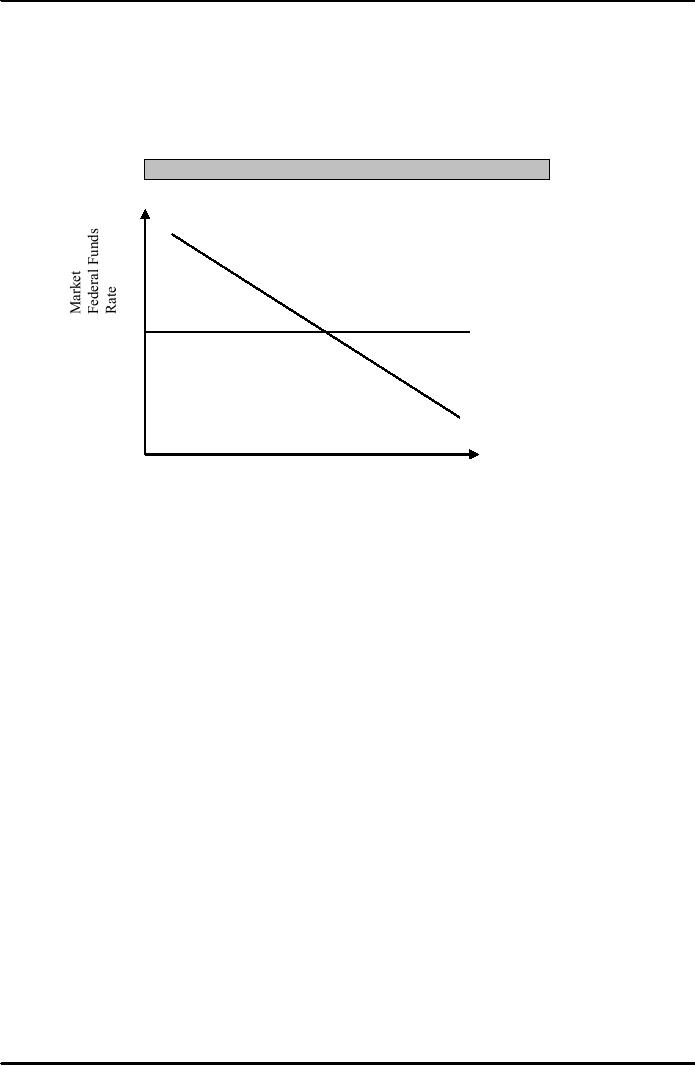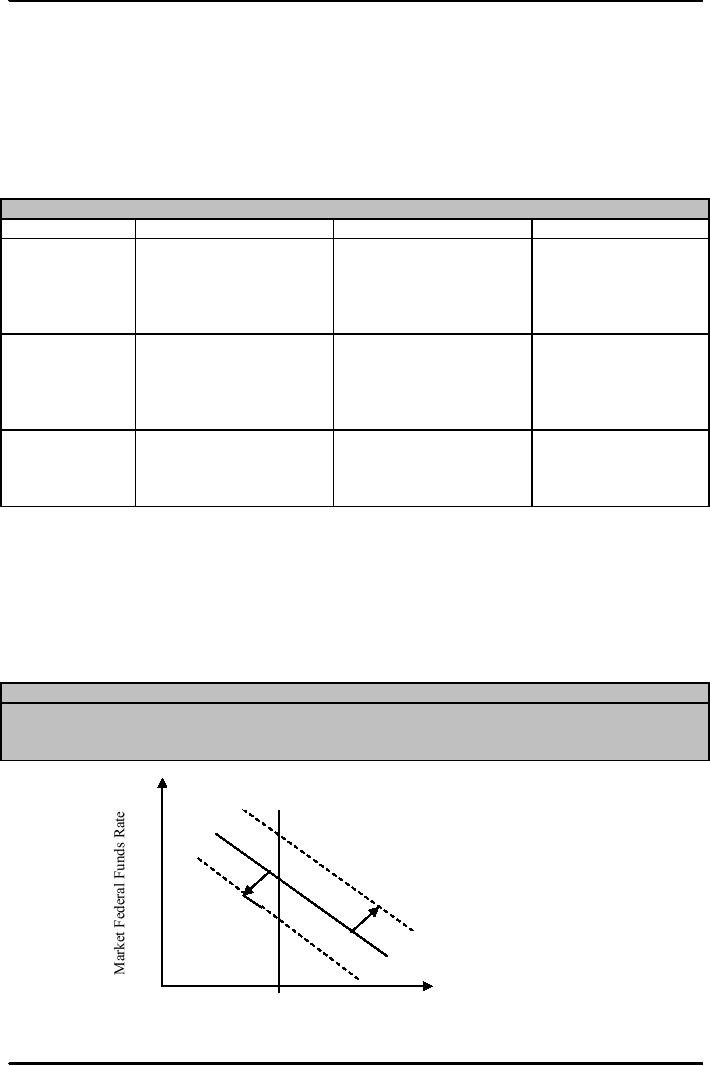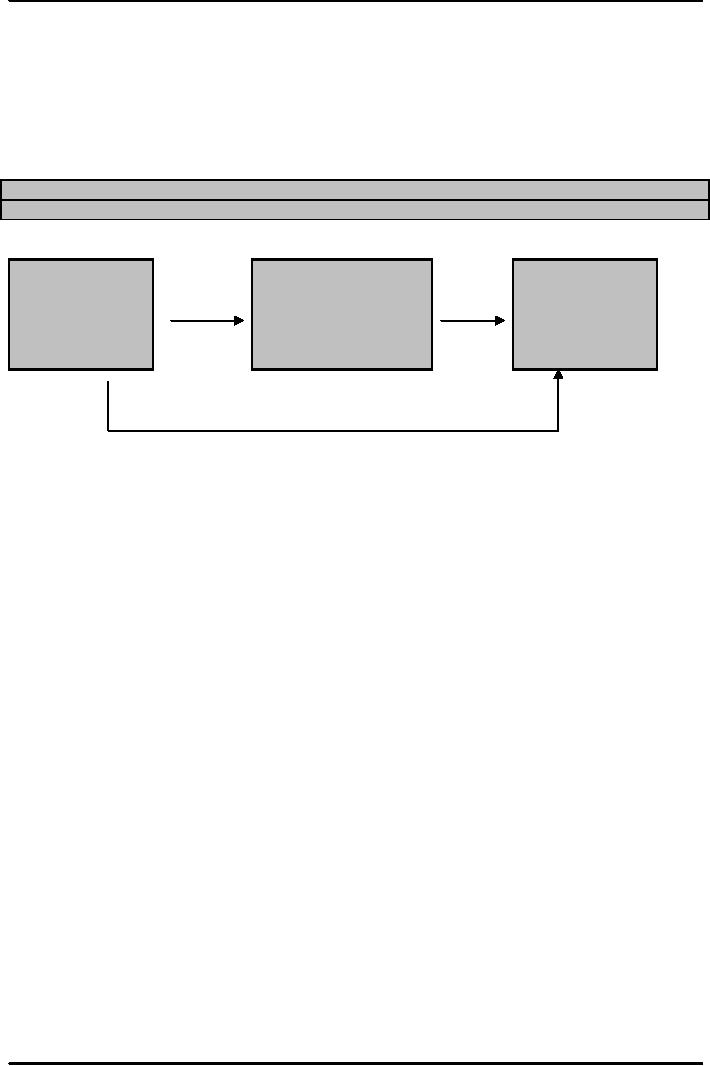 |
TARGET FEDERAL FUNDS RATE AND OPEN MARKET OPERATION |
| << MONEY MULTIPLIER:The Quantity of Money (M) Depends on |
| WHY DO WE CARE ABOUT MONETARY AGGREGATES?The Facts about Velocity >> |

Money
& Banking MGT411
VU
Lesson
36
TARGET
FEDERAL FUNDS RATE AND OPEN
MARKET OPERATION
The
central bank chooses to
control the federal funds rate by
manipulating the quantity of
reserves
through open market operations: the
central bank buys or sells securities to
add or drain
reserves
as required.
Figure:
The Market for Bank
Reserves
Reserve
Supply
Target
Rate
Reserve
Demand
Quantity
of Reserves
Discount
Lending, the Lender of Last
Resort and Crisis
Management
Lending
to commercial banks is not an important
part of the central bank's day-to-day
monetary
policy.
However,
such lending is the central
bank's primary tool for
ensuring short-term financial
stability,
for eliminating bank panics
and preventing the sudden collapse of
institutions that are
experiencing
financial difficulties.
The
central bank is the lender of last
resort, making loans to banks when no one
else can or will,
but
a bank must show that it is
sound to get a loan in a crisis.
The
current discount lending
procedures also help the
central bank meet its
interest-rate stability
objective.
The
central bank makes three types of
loans:
Primary
credit,
Secondary
credit,
Seasonal
credit
Primary
credit is extended on a very short-term
basis, usually overnight, to
sound institutions.
It
is designed to provide additional
reserves at times when the day's
reserve supply falls short
of
the
banking system's
demand.
The
system provides liquidity in
times of crisis, ensures financial
stability, and restricts
the
range
over which the market
federal funds rate can move
(helping to maintain interest-rate
stability).
Secondary
credit is available to institutions
that are not sufficiently
sound to qualify for
primary
credit.
Banks
may seek secondary credit
due to a temporary shortfall in reserves
or because they have
longer-term
problems that they need to
work out.
Seasonal
credit is used primarily by
small agricultural banks to
help in managing the
cyclical
nature
of farmers' loans and deposits
113

Money
& Banking MGT411
VU
Reserve
Requirements
By
adjusting the reserve requirement, the
central bank can influence
economic activity because
changes
in the requirement affect deposit
expansion.
Unfortunately,
the reserve requirement turns out
not to be very useful
because small changes
in
the
reserve requirement have large
(really too large) impacts
on the level of deposits.
Today,
the reserve requirement exists primarily
to stabilize the demand for
reserves and help the
Central
bank to maintain the market
federal funds rate close to
target; it is not used as a
direct
tool
of monetary policy.
The
central bank's Monetary Policy
Toolbox
The
Tools of Monetary
Policy
What
is it?
How
is it controlled?
What
is its impact?
Changes
interest rates
Interest
rate charged on
Supply
of reserves adjusted
Target
Federal
throughout
the
overnight
loans between
through
open market
Funds
Rate
economy
banks
operations
to meet
expected
demand at the
target
rate
Interest
rate charged by the Set as a
premium over the
Provides
short-term
Discount
rate
central
bank on loans to
target
federal funds rate
liquidity
to bank in
commercial
banks
times
of crisis and aids
in
controlling the
federal
funds rate
Fraction
of deposits that
Set
by the central bank
Stabilizes
the demand
Reserve
bank
must keep either on
within
a liquidity imposed
for
reserves
requirement
deposit
at the central bank
range
or
as cash in their
vaults
Linking
Tools to Objectives
Desirable
Features of a Policy
Instrument
Easily
observable by everyone
Controllable
and quickly changed
Tightly
linked to the policymakers'
objectives
These
requirements leave policymakers with
few choices, and over the
years central banks
have
switched
between controlling the quantity and
controlling the prices.
Figure:
The Market for Bank
Reserves when the central
bank targets the quantity of
reserves
When
central bank targets the
quantity of reserves, a shift in
reserve demand causes the
market federal
funds
rate to move. An increase in reserve
demand forces the interest rate up,
while a fall in
reserve
demand
forces the interest rate down.
Reserve
Supply
Increase
in Reserve Demand
Fall
in
Reserve
Demand
Reserve
Demand
Target
Quantity Quantity of Reserves
114

Money
& Banking MGT411
VU
Targets
and Instruments
Operating
instruments refer to actual tools of
policy, instruments that the central
bank controls
directly.
Intermediate
target refers to instruments that are
not directly under the
control of the central
bank
but that lie between their
policymaking tools and their
objectives.
Over
the last two centuries, central bankers
largely abandoned intermediate targets,
having
realized
that they didn't make
much sense.
Instead,
policymakers focus on how their actions
directly affect their target
objectives
Instruments,
Targets and Objectives
Using
policy instruments to target objectives
directly
Link
Link
Operating
Intermediate
Targets
Final
Objectives
#1
#2
Instruments
Examples:
Examples:
Examples:
Low
inflation
Interest
Rates
Growth
in Monetary
High
Growth
Monetary
Base
Aggregates
Link
# 3
115
Table of Contents:
- TEXT AND REFERENCE MATERIAL & FIVE PARTS OF THE FINANCIAL SYSTEM
- FIVE CORE PRINCIPLES OF MONEY AND BANKING:Time has Value
- MONEY & THE PAYMENT SYSTEM:Distinctions among Money, Wealth, and Income
- OTHER FORMS OF PAYMENTS:Electronic Funds Transfer, E-money
- FINANCIAL INTERMEDIARIES:Indirect Finance, Financial and Economic Development
- FINANCIAL INSTRUMENTS & FINANCIAL MARKETS:Primarily Stores of Value
- FINANCIAL INSTITUTIONS:The structure of the financial industry
- TIME VALUE OF MONEY:Future Value, Present Value
- APPLICATION OF PRESENT VALUE CONCEPTS:Compound Annual Rates
- BOND PRICING & RISK:Valuing the Principal Payment, Risk
- MEASURING RISK:Variance, Standard Deviation, Value at Risk, Risk Aversion
- EVALUATING RISK:Deciding if a risk is worth taking, Sources of Risk
- BONDS & BONDS PRICING:Zero-Coupon Bonds, Fixed Payment Loans
- YIELD TO MATURIRY:Current Yield, Holding Period Returns
- SHIFTS IN EQUILIBRIUM IN THE BOND MARKET & RISK
- BONDS & SOURCES OF BOND RISK:Inflation Risk, Bond Ratings
- TAX EFFECT & TERM STRUCTURE OF INTEREST RATE:Expectations Hypothesis
- THE LIQUIDITY PREMIUM THEORY:Essential Characteristics of Common Stock
- VALUING STOCKS:Fundamental Value and the Dividend-Discount Model
- RISK AND VALUE OF STOCKS:The Theory of Efficient Markets
- ROLE OF FINANCIAL INTERMEDIARIES:Pooling Savings
- ROLE OF FINANCIAL INTERMEDIARIES (CONTINUED):Providing Liquidity
- BANKING:The Balance Sheet of Commercial Banks, Assets: Uses of Funds
- BALANCE SHEET OF COMMERCIAL BANKS:Bank Capital and Profitability
- BANK RISK:Liquidity Risk, Credit Risk, Interest-Rate Risk
- INTEREST RATE RISK:Trading Risk, Other Risks, The Globalization of Banking
- NON- DEPOSITORY INSTITUTIONS:Insurance Companies, Securities Firms
- SECURITIES FIRMS (Continued):Finance Companies, Banking Crisis
- THE GOVERNMENT SAFETY NET:Supervision and Examination
- THE GOVERNMENT'S BANK:The Bankers' Bank, Low, Stable Inflation
- LOW, STABLE INFLATION:High, Stable Real Growth
- MEETING THE CHALLENGE: CREATING A SUCCESSFUL CENTRAL BANK
- THE MONETARY BASE:Changing the Size and Composition of the Balance Sheet
- DEPOSIT CREATION IN A SINGLE BANK:Types of Reserves
- MONEY MULTIPLIER:The Quantity of Money (M) Depends on
- TARGET FEDERAL FUNDS RATE AND OPEN MARKET OPERATION
- WHY DO WE CARE ABOUT MONETARY AGGREGATES?The Facts about Velocity
- THE FACTS ABOUT VELOCITY:Money Growth + Velocity Growth = Inflation + Real Growth
- THE PORTFOLIO DEMAND FOR MONEY:Output and Inflation in the Long Run
- MONEY GROWTH, INFLATION, AND AGGREGATE DEMAND
- DERIVING THE MONETARY POLICY REACTION CURVE
- THE AGGREGATE DEMAND CURVE:Shifting the Aggregate Demand Curve
- THE AGGREGATE SUPPLY CURVE:Inflation Shocks
- EQUILIBRIUM AND THE DETERMINATION OF OUTPUT AND INFLATION
- SHIFTS IN POTENTIAL OUTPUT AND REAL BUSINESS CYCLE THEORY